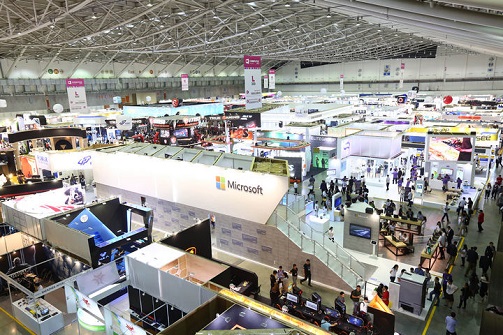COMPUTEX 2017, co-organized by Taipei Computer Association(TCA) and Taiwan External Trade Development Council (TAITRA), saw 41,378 international visitors from 167 countries attending the show, a 1% increase from last year. Countries with the highest visitor growth include Thailand (30.63%), Indonesia (22.52%), India (20.86%), Vietnam (20.44%), and Russia (14.81%). During the show, 955 sessions of 1-on-1 procurement meetings are arranged to directly link 181 VIP buyers with 297 exhibitors.
The InnoVEX 2017 captured the attention of the industry, as an exhibition of innovative elements, coupled with the digital economy era emphasizes the soft and hard integration service model, so in a short 3-day period, attracted 14,977 visits to InnoVEX, an increase of 36% from last year.
Artificial intelligence is regarded by research consultant agency Gartner as the leading strategic technology trend of 2017, related topics also brought whirlwinds at the COMPUTEX exhibition. NVIDIA founder Jensen Huang stated in his speech at the AI forum that through GPU heterogeneous computing, computing efficiency could be enhanced by 10-50 times and will also drive the improvement of AI computation efficiency. For example, NVIDIA has created a platform for intelligent machines. Through the virtual environment of ISAAC Lab and the auto-drive technology based Astro AV smart platform, robot behavior learning and training could be performed through a virtual environment, which is a practical application of artificial intelligence.
ARM announced in the pre-exhibition press conference that it will launch an artificial intelligence experience that accelerates endpoint to the cloud, which uses Cortex-A75 and Cortex-A55 processors based on the ARM DynamIQ technology. The NVIDIA Project Holodeck perfectly showcased the three elements “module fidelity”, “realistic physical response” and “interactive collaboration” on the Taiwanese manufactured e-scooter Gogoro, which demonstrates VR experiences of the future of gaming, consumer behavior and commercial creativity. ITRI’s “MMG gesture recognition technology” detects the user’s muscle activity and determine the user’s activity status, from motion signals on the muscle surface, which can be applied to gesture control, VR device interaction, rehabilitation equipment, and auxiliary technology for the teaching of crafts.


 Computex 2017 ends on a successful note
Computex 2017 ends on a successful note